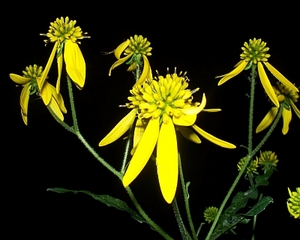Plants are an important part of our world. We use plants for food, shelter, clothing, healing, decorations, protection and more. We depend on plants to provide fuel, breathable air and building materials. We use plants in crafts, for entertainment and for the creation of tools. Therefore, studying plants is not only important for learning about basic concepts but can be used to develop interests and for the development of new medicines, products and fuels.
Primary lesson plans can be geared towards younger children to help them develop observation skills and grasp basic science concepts about plants and life cycles. Generally, these lesson plans include planting a seed in a see through container and documenting the growth of the plant. Lessons can be expanded to examine germination times, seed parts, plant requirements, environmental conditions and how seeds travel.
Field trips can be more than just a chance to get out of the classroom. They should provide new information to consider or reaffirm lessons previously taught. Good field trips for learning about plants may include the zoo, hiking areas, wildlife preservation centers, parks, botanical gardens or your backyard and garden. Missouri Botanical Gardens, for example, has virtual medicinal plant tours, movie nights and presentations on a variety of plant related topics.
Plant Identification
On field trips or outings encourage children to take pictures of interesting plants. Optionally, children may wish to draw or sketch the plants. Do not pick or touch unknown plants. Assign the task of identifying the plants. The United States Department of Agriculture has a plant database with over 40,000 plant images. Identification books are also readily available from book stores and libraries and can be helpful, also.
Plant Diseases
Just like people, plants get diseases. After observing plants, the children may note that there are symptoms of distress, or holey leaves or discolored or weird things on the plants. This is an opportunity to discuss the types of plant diseases, treatments or natural controls.
Plants: Discovery and Experimentation
Another observation students might look for and can be expanded into a lesson is the biodiversity of plants in a designated area. Discovery Education provides a lesson on biodiversity and covers basic methods of analyzing and collecting data.
Endangered or Threatened and Protected Plants
Just as there are endangered and threatened animal species there are also threatened and endangered plant species. Students can search the threatened and endangered lists for their geographical area and learn about ways to protect the plant species in their locations.
Plant Art
Plants or plant products can be used in a variety of art lesson plans. Use plants to make imprints, carvings, tools, for new recipes and to create art pieces and collages.
References and Resources
Personal Experience
Plants, A to Z Teacher Stuff
Flowers, ABC Teach Directory
Flower Theme Page, Enchanted Learning
Missouri Botanical Garden Homepage, Missouri Botanical Garden
Plants/Flowers, The Teacher’s Guide
Life Science, Can Teach
Plant Science Lesson Plans, Lesson Plan Inc.
Looking for Biodiversity, Discovery Education
Plants Database, USDA Natural Resources Conservation Service




